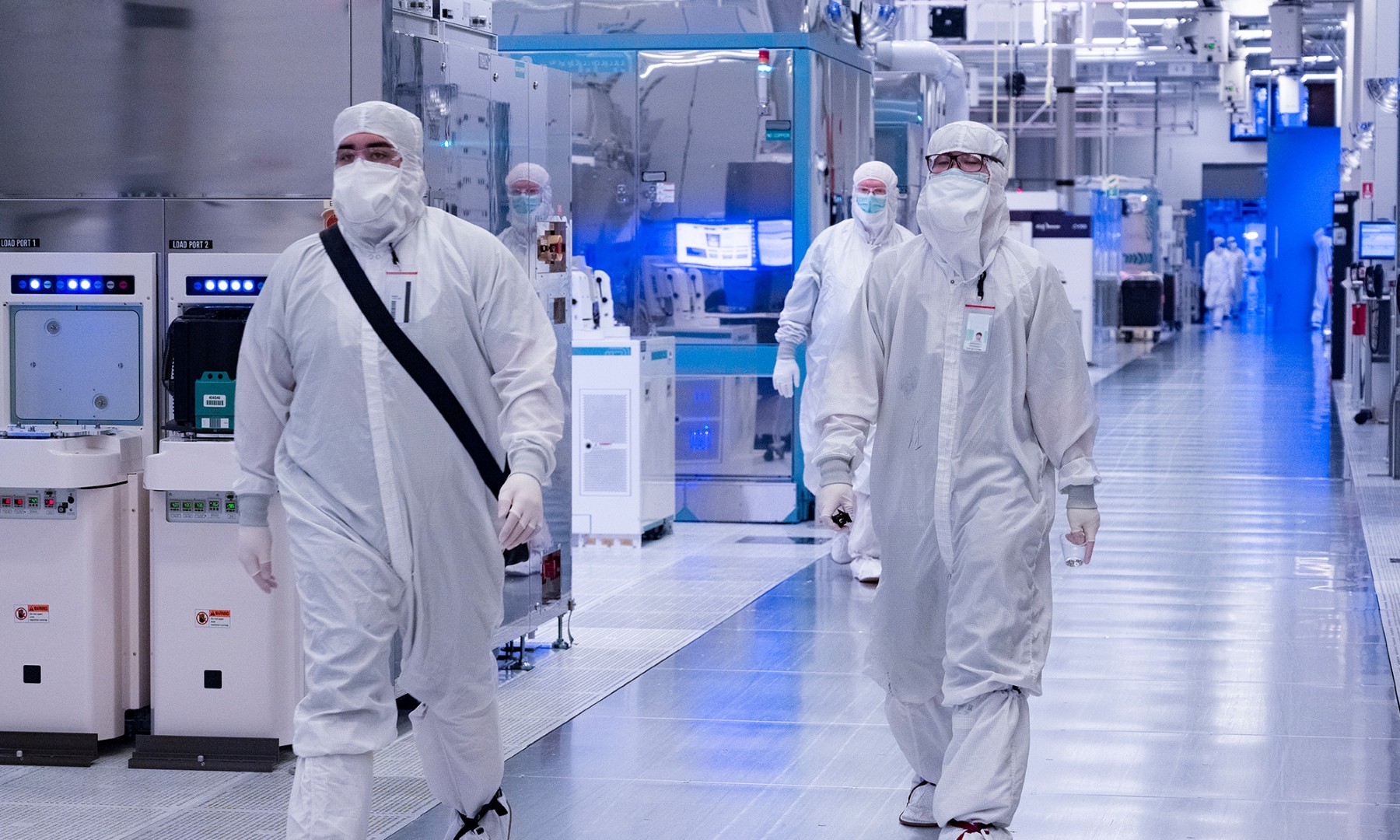Intel (INTC 3.53%) has set its sites on regaining manufacturing dominance with an ambitious plan to launch five new process nodes in four years. Intel 7, a revamp of its long-delayed 10-nanometer node, was first on the list. Then came Intel 4, which was used for the compute tile portion of Intel's Meteor Lake laptop central processing units (CPUs) that launched toward the end of last year.
Intel 3 is the third new process to launch and the most important for Intel so far. It's the first leading-edge node that will be used by external foundry customers, and the company plans to keep it around for a long time. Multiple variants that improve performance or add features will also be available for specialized-use cases.

NASDAQ: INTC
Key Data Points
Big gains in a short time
The only first-party products from Intel announced for the Intel 3 process are the company's Xeon 6 server CPUs. These include Sierra Forest, an already launched CPU that packs as many as 144 efficiency cores into a single chip, and Granite Rapids, a more traditional server CPU that focuses on performance.
Intel has booked about $15 billion worth of external business for its foundry, although the company hasn't shared many details about its customers. An unknown portion of those design wins are for the Intel 3 process.
The Intel 3 process reached manufacturing readiness at the end of 2023 and has already been in high-volume production at the company's Oregon research and development (R&D) site. This week, the company announced that Intel 3 has also reached high-volume product at its fab in Leixlip, Ireland.
According to Intel, the Intel 3 process delivers as much as 18% better performance at the same power, compared to Intel 4, as well as up to 10% greater density. That's a sizable leap in performance given how quickly Intel followed up Intel 4 with Intel 3.
Intel 20A and 18A incoming
There are two process nodes left in Intel's initial roadmap, Intel 20A and Intel 18A. Both will use a new transistor design and bake in backside power delivery technology for improved performance and efficiency. Like Intel 3, Intel 18A will be a long-lived node with multiple variants aimed at foundry customers.
Both Intel 20A and Intel 18A will be ready for manufacturing this year, although it will take time for volumes to ramp up. The company's upcoming Arrow Lake PC CPUs will use the Intel 20A process and are set to launch in the fourth quarter, while future generations of Intel's chips will use the Intel 18A process. The company has also snagged some high-profile external foundry customers for Intel 18A, including Microsoft.
With Intel 3 delivering meaningful performance gains, Intel 18A has the potential to be a huge leap forward for Intel.
Buy Intel stock before the foundry takes off
Right now, Intel's foundry business is generating next to nothing from external customers as it invests heavily in new process nodes and facilities. Intel recently split its foundry into a separate reporting unit, and the massive losses reported have rattled investors.
However, the situation can improve quickly as external revenue starts rolling in in 2025 and beyond. Intel expects the foundry business to reach breakeven somewhere around 2027 and deliver 30% adjusted operating margins by the end of 2030. Along the way, the company plans to grow into the world's second-largest foundry.
The performance improvements delivered in such a short time by Intel 3 should give investors some confidence that Intel can successfully deliver on its foundry roadmap. With the stock beaten down this year by foundry uncertainty, now is a great time to bet on a turnaround at Intel.





